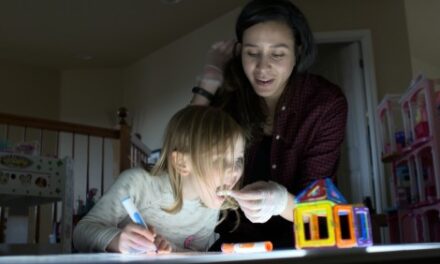(Newswise)–Billy Kuhl, age 14, is no stranger to bumps and bruises having been involved in numerous sports, including football and hockey, for several years. But last fall on his way to football practice a bicycle accident made him realize how important it is to take injuries seriously.
While biking to football practice, Kuhl’s football spikes caused him to lose his footing. He was thrust forward over the front of the bike. The handle bars were jammed into his upper thigh causing a deep muscle injury.
“It blew up like a grapefruit, but I’ve had lots of bruises so I didn’t think anything about it. I thought I just needed to work through it, but the bruise just kept getting bigger and bigger,” said Kuhl.
Though he didn’t take part in practices that week, he did play in the football game as well as three hockey games that weekend. Kuhl’s parents noticed that instead of getting better the bruise was getting worse and had become hard in the middle.
“We realized it should’ve gone down by now, but it was just getting worse so we decided to take him in for an X-ray,” said William Kuhl, Billy’s father.
Kuhl saw Jerold Stirling, MD, pediatric sports medicine expert at Loyola University Health System and chair of the Department of Pediatrics at Loyola University Chicago Stritch School of Medicine.
“When a large muscle is injured by bruising, it may cause bleeding into the muscle itself. On occasion, as the body is healing itself from the bleeding it can calcify in the muscle causing bone to form inside the muscle. This is called myositis ossificans,” said Stirling. “Though this condition is unusual, it should be considered in athletes who suffer a deep bruise and continue to have pain over a period of time, and for reason the sports medicine is very important.
According to Stirling, 95 percent of the time the condition will heal naturally with rest and immobilization. Though Kuhl had to be out of sports for a month, there will be no long-term effects and he is now back to playing sports like before.
“It was hard to not do anything. I kept thinking. ‘How long will this take to heal? How can my body do that? I just want to get back out there,’” Kuhl said.
“He was really itching to play, which is common with good athletes, but it was important for him to avoid activity on that leg. If he pushed it, the condition would only get worse. Just waiting can be hard, but it’s what you have to do for your body to heal and prevent this problem from worsening,” Stirling said.
If an athlete has a traumatic injury, Stirling says to look for these symptoms of myositis ossificans:
• Bruise is not getting better
• Persistent pain
• Instability
• Difficulty with gait
“Billy’s parents did the right thing. They felt something was wrong, went with their gut and sought medical help. Parents and kids can feel a lot of pressure to be ‘in the game’ but they need to take their health and injuries seriously. If your child is hurt, let a physician make the call about when to play and when not to play, especially if your child is a competitive athlete,” Stirling said.




